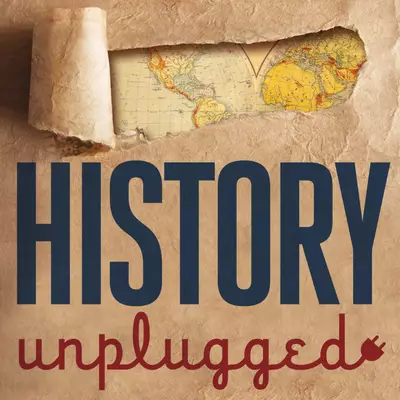Listen on Your Favorite App
How a WW2 Soldier Persevered Through Concentration Camps, Death Marches, and Starvation
July 05, 2022
00:00
45:16
Listen on Your Favorite App
One of the most widely read books of the 20th century is Viktor Frank’s “Man’s Search for Meaning.” In it, the author, a survivor of Nazi concentration camps during World War II, described his psychotherapeutic method to endure the most hellish experiences imaginable. One must hold onto a purpose in life and immersively imagine that outcome. Many have used Frankl’s method, one of which was Harold Frank, a WW2 rifleman who survived a Nazi POW camp, a multi-day death march, thousands of tons of bombs detonating nearby, and starvation conditions that caused him to lose over 100 pounds.
His combat began at D-Day in 1944: twenty-year-old PFC Harold Frank had moved as one with his battalion onto the shores of Utah Beach, pushing into France to cut off and blockade the pivotal Nazi-occupied deep-water port of Cherbourg. As a recognized crack shot with WW II's iconic American automatic rifle, Frank fought bravely across the bloody hedgerows of the Cotentin Peninsula.
During the most intense fighting, Frank was ambushed and wounded in a deadly, nine-hour firefight with Germans. Taken prisoner and with a bullet lodged under one arm, Frank found himself dumped first in a brutal Nazi POW concentration camp, then shipped to a grueling work camp on the outskirts of Dresden, Germany, where the young PFC was exposed to the vengeance of a crumbling Nazi regime, the menace of a rapidly advancing Russian military—and the danger of thousands of Allied bombers screaming overhead during the firebombing of Dresden.
Today’s guest is historian Mark Hager, author of The Last of the 357th Infantry: Harold Frank’s WWII Story of Faith and Courage. He builds on hundreds of hours of interviews with Frank, sharing the account of his journey as a child of the Great Depression to the bloody shores of the D-Day invasion, into the bowels of Nazi Germany, and back to the U.S. where as a young man Harold would spend years resolutely dealing with the lingering effects of starvation rations while determinedly building a new life—a life always mindful of the legacy of his POW experience and his faithful service in America’s hard-fought war against Nazi aggression.
His combat began at D-Day in 1944: twenty-year-old PFC Harold Frank had moved as one with his battalion onto the shores of Utah Beach, pushing into France to cut off and blockade the pivotal Nazi-occupied deep-water port of Cherbourg. As a recognized crack shot with WW II's iconic American automatic rifle, Frank fought bravely across the bloody hedgerows of the Cotentin Peninsula.
During the most intense fighting, Frank was ambushed and wounded in a deadly, nine-hour firefight with Germans. Taken prisoner and with a bullet lodged under one arm, Frank found himself dumped first in a brutal Nazi POW concentration camp, then shipped to a grueling work camp on the outskirts of Dresden, Germany, where the young PFC was exposed to the vengeance of a crumbling Nazi regime, the menace of a rapidly advancing Russian military—and the danger of thousands of Allied bombers screaming overhead during the firebombing of Dresden.
Today’s guest is historian Mark Hager, author of The Last of the 357th Infantry: Harold Frank’s WWII Story of Faith and Courage. He builds on hundreds of hours of interviews with Frank, sharing the account of his journey as a child of the Great Depression to the bloody shores of the D-Day invasion, into the bowels of Nazi Germany, and back to the U.S. where as a young man Harold would spend years resolutely dealing with the lingering effects of starvation rations while determinedly building a new life—a life always mindful of the legacy of his POW experience and his faithful service in America’s hard-fought war against Nazi aggression.
See omnystudio.com/listener for privacy information.
More Episodes
See all episodes
Meet Your Host

Scott Rank is the host of the History Unplugged Podcast and a PhD in history who specialized in the Ottoman Empire and modern Turkey. Before going down the academic route he worked as a journalist in Istanbul. He has written 12 history books on topics ranging from lost Bronze Age civilizations to the Age of Discovery. Some of his books include The Age of Illumination: Science, Technology, and Reason in the Middle Ages and History’s 9 Most Insane Rulers.. Learn more about him by going to scottrankphd.com.
